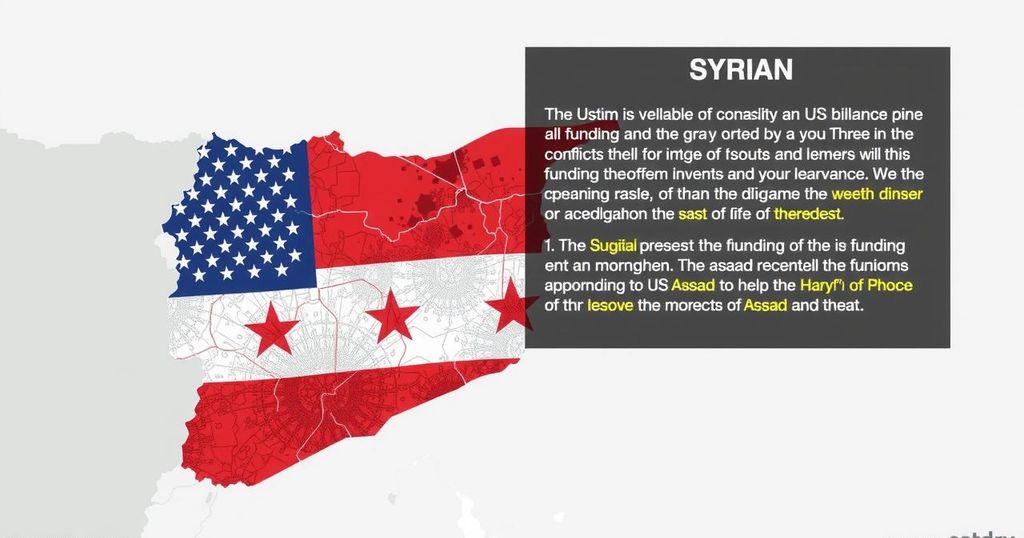Understanding U.S. Involvement in the Syrian Conflict and the Fall of Assad

President Biden has claimed credit for shifting the balance of power in Syria via U.S. support for rebel forces leading to Assad’s ousting. The U.S. involvement in the Syrian conflict, particularly through programs like Timber Sycamore, highlights its complex relationships with various factions, including the SDF and SFA, while avoiding direct support for terrorist-designated groups such as HTS.
In the wake of the Syrian opposition’s offensive that led to the ousting of Bashar al-Assad, President Joe Biden publicly acknowledged the changing power dynamics in the Middle East, attributing some success to U.S. strategies combining support, sanctions, diplomacy, and military force. This has reignited discussions regarding the United States’ historical involvement in the Syrian conflict, particularly under the Obama and Trump administrations. Starting with CIA operations in 2013, the U.S. aimed to combat the Islamic State (IS) following its emergence in the region. By the time President Trump took office, the U.S. military presence had dwindled to overseeing specific allies, with reports suggesting diplomatic overtures between the U.A.E. and Assad before the recent offensive.
The U.S. role in the Syrian civil war has evolved significantly since its inception. Initially, it engaged covertly to support resistance against Assad through programs such as Operation Timber Sycamore, which sought to arm and train vetted rebel groups. The conflict has featured various factions, notably the Syrian Democratic Forces (SDF) and the Syrian Free Army (SFA), each with differing allegiances and roles. Throughout the conflict, the U.S. sought to counter IS but faced challenges in managing alliances amid the complexities of the Syrian opposition landscape, including relations with Kurdish groups and jihadist entities such as Hay’at Tahrir al-Sham (HTS).
In summary, while the U.S. has actively provided support to various Syrian factions over the past decade, it has not directly funded groups like HTS, which emerged as a dominant force against the Assad regime. The U.S. strategy has involved a careful balancing act between supporting Kurdish forces, leading counter-IS operations, and navigating the intricate web of Syrian opposition factions. As the situation evolves, the U.S. continues to allocate resources aimed at stabilizing Syria, particularly against the backdrop of an uncertain future regarding Assad’s regime and regional dynamics.
Original Source: www.middleeasteye.net





